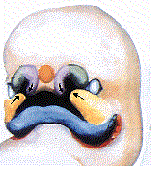Development of Cleft Lip & Palate
How Do the Nose and Mouth Develop?
The nose and mouth of a baby develop between the 5th and 12th weeks of life inside the mother’s womb.
 The lips and palate originate from three areas of the baby’s developing face:
The lips and palate originate from three areas of the baby’s developing face:
- Central or Frontal Nasal Prominence: normally grows to become the forehead, nose, middle portion of the upper lip (philtrum or Cupid’s bow) and the primary palate (part of the upper jaw that holds the middle four teeth)
- Left and Right Maxillary Prominences: grow and become the lower face, lower lip and jaw, all but the middle portion of upper lip and jaw, and the secondary palate (behind the four upper middle teeth to back of mouth.
These three prominences on the child’s developing face grow towards the center of the face and fuse together during the 6th to 13th weeks of pregnancy. When this happens correctly, the child’s lips, mouth, and palate develop normally. But sometimes this growth process is disturbed in some way and the prominences do not meet. When this happens, the lips and mouth do not form properly, leaving a cleft or split in the lip.
How Does the Palate Form?
As shown above, the prominence’s grow and come together, fusing to create the nose, the mouth, the lips and the front part of the palate.
Next to the prominence’s are the palatine shelves which start out as ledges on either side of the mouth. As the fetus grows, these ledges lengthen and join in the middle to form the back of the palate in the same way that a zipper closes. The joining process, or “closing of the zipper” starts up front by the teeth and moves backwards towards the throat.
If the process of growth and joining is interrupted at any stage, a gap or split will develop, resulting in a cleft of either the lip or the palate. The type of cleft that develops in the lip and/or palate depends upon when the joining process is interrupted.
